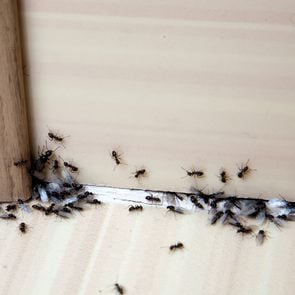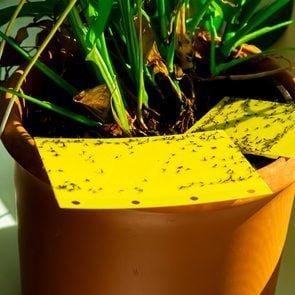Are These Red and Black Bugs All Over the Side of Your House?
Here's what they're after.
Each fall, boxelder bugs and Asian lady beetles search for a warm winter shelter. Unfortunately, your house may be the place they pick.
While you may find these red and black bugs throughout the year, fall is when they really become pests. Here’s what you need to know about boxelder bugs and Asian lady beetles, as well as three other red and black bugs that could be lurking in your yard.
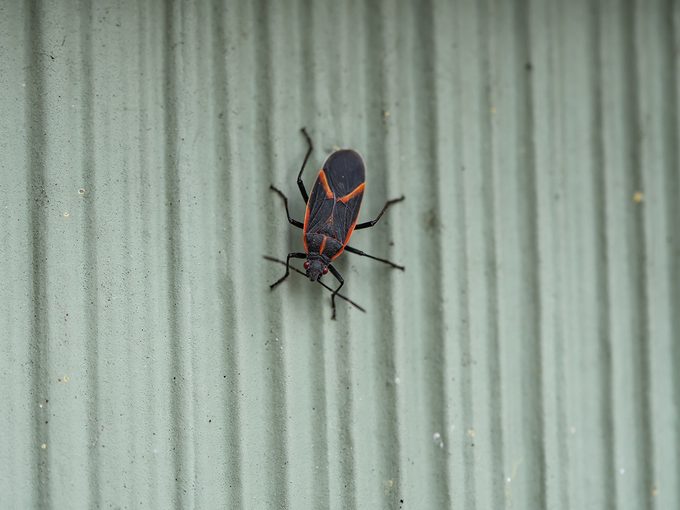
Boxelder Bugs
Many of the red and black bugs on this list look similar. You can distinguish between them by their distinctive behaviours and markings.
If you have a large congregation of ovular, red and black bugs on the sunny side of your house each fall, your problem is probably boxelder bugs (above). They’re infamous for covering outer walls in search of the last rays of summer sun. Can you blame them?
You can get rid of boxelder bugs outside by applying pesticide and covering potential entryways. If they do make their way inside, know that they do not cause structural damage or breed within your home, unlike termites. Once they are inside the house, simply vacuum them up with a hose attachment. They may leave behind stains if you crush them.
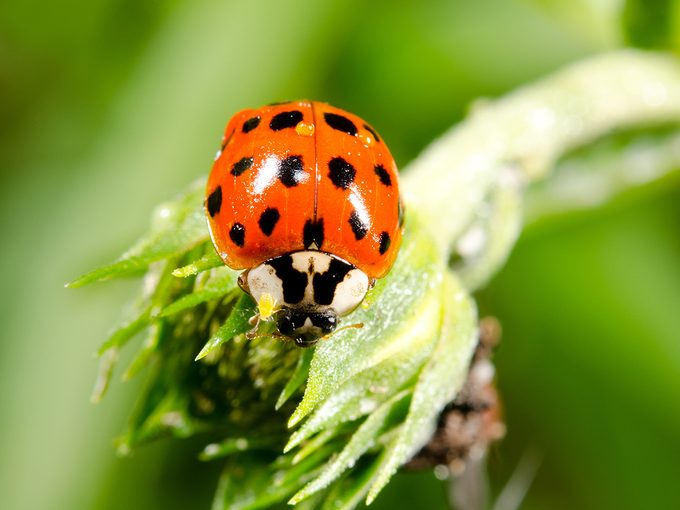
Asian Lady Beetle
Asian lady beetles are often called ladybugs because the two insects look nearly identical at first glance. If you have small, round, black and orange beetles in your windowsills, the Asian lady beetle is the most likely culprit.
Like boxelder bugs, you may find these unwelcome pests in high numbers, but they don’t typically cover sides of buildings in quite the same way. Instead, they’ll weasel their way into your home to escape the oncoming winter, buzz around your light bulbs for a while, then drop dead before spring. They are a predator to the native ladybug. And although mostly harmless, sometimes they bite.
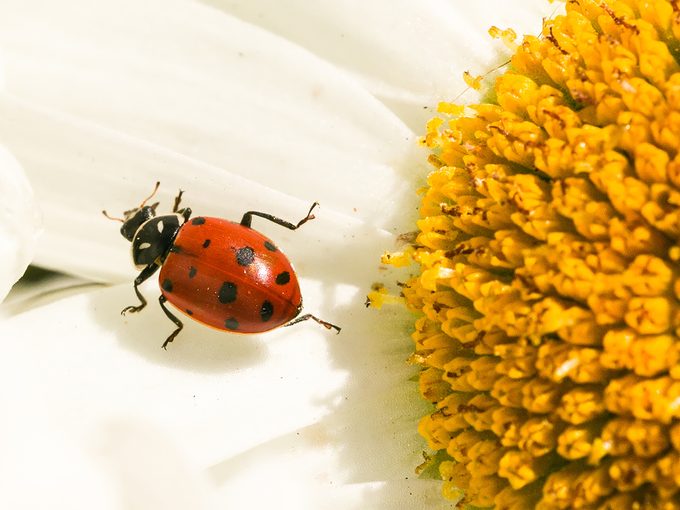
Native Ladybug
Native ladybugs are less common than the invasive Asian lady beetle these days, but they are more desirable to gardeners. Unlike the Asian lady beetle, ladybugs do not bite or invade homes in the winter. Plus, their appetite for aphids and other plant-eating insects makes them a great natural pest control. (Here are more gardening tips you’ll wish you’d known sooner.)
To distinguish between these two red and black bugs, look at their size and markings. There are many species of true ladybugs, but they are usually smaller and rounder, with little white spots on their cheeks. Asian lady beetles have more white markings in general, including larger cheeks and an M shape where the head meets the body.
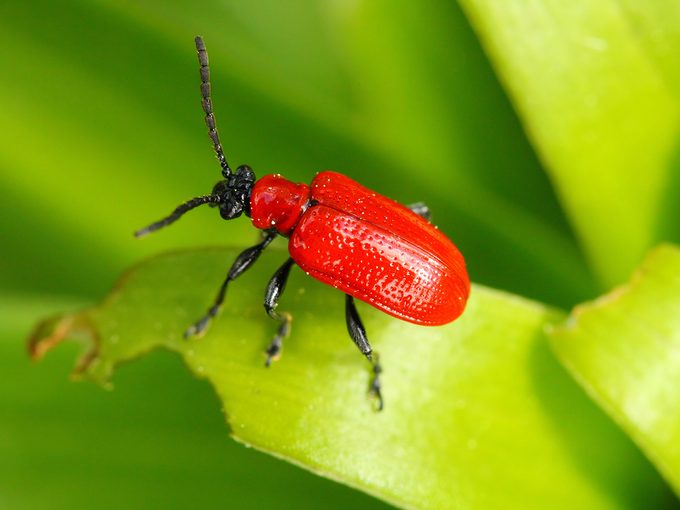
Scarlet Lily Leaf Beetle
Another red and black bug that could wreak havoc in your garden is the scarlet lily leaf beetle. These are particularly annoying for those who are fond of lilies. These beetles are red on top and black on the bottom.
According to Gardener’s Supply Company, the adult beetles munch on lily leaves and lay eggs on their undersides. Their larvae can decimate leaves, buds and flowers.
Scarlet lily leaf beetles overwinter in the ground, so you don’t have to worry about them invading your home in the fall. These pests are worst in the spring—around the time daffodils and lilies bloom.
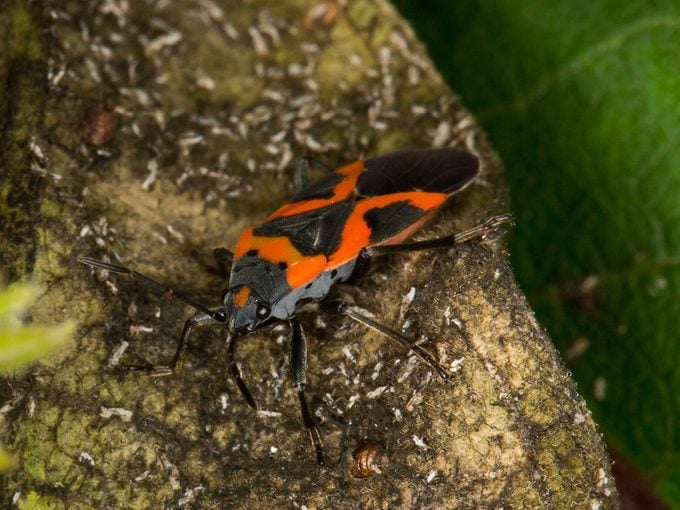
Milkweed Bugs
Common milkweed is one of the best flowers for bees, butterflies and other pollinators. (Find out more things you can do to save the bees.) It blooms with round clumps of small, mauve, good-smelling flowers. Most people plant milkweed to attract monarch butterflies. However, it can attract nuisance bugs as well.
If you have this plant in your yard, keep an eye out for the boxelder bug-like group of black and orange beetles known as milkweed bugs. The Save Our Monarchs Foundation gives an overview of four milkweed bugs. Only one species, the small milkweed bug (pictured), is harmful to monarchs. Look for an X or hourglass shape on its back to distinguish the small milkweed bug from other red and black bugs.
Now that you can identify these red and black bugs, find out the 10 most disgusting house bugs—and how to get rid of them.

